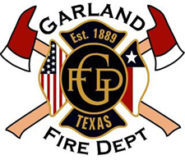Garland’s Fire Chief, Mark Lee, outlined the impact that the Baylor Scott & White Hospital closing will have on the city’s Fire/Emergency Medical Services system.
The chief began by sharing the department’s mission: “To serve and protect the citizens and business community of Garland through fire prevention, emergency medical response and public education, as well as quick and effective response for fire suppression and disaster management. We respond immediately when any member of our community needs help with professional, effective and compassionate service.”
Lee gave his assurance that the mission will not change and said that the Garland Fire Department is “here to help, with or without the hospital.”
Some of the statistics shared by Lee were surprising.
He said that Baylor Scott & White Garland Hospital saw 50,000 patients per year in its emergency room. Approximately 11,000 of Baylor Garland’s 2017 patients came from the 75040 ZIP code and 8,600 came from the 75042 ZIP code, which indicates that these two areas are the ones that will be most affected by the hospital closing.
Garland’s EMS personnel responded to 17,192 calls in 2017 and assessed 18,235 patients. They transported more than 10,400 to hospitals and 59.6 percent of those were taken to Baylor Scott & White Garland.
The current operating cost per mile for Garland’s ambulances is $3.16. In 2017, the average number of miles was 5.93. This totals an operating cost of $199,456. This figure covers transport only, not personnel.
When Baylor is removed from the mix, the 4,732 transports that were made to other hospitals averaged 8.75 miles and the operating cost was $130,840. This is an increase of 2.82 miles, for an operating cost increase of $189,701. This increase covers getting the patient to the hospital and the ambulance back to Garland.
Lee explained that the increased transport time to farther hospitals could be five to six and one-half minutes which is a concern for those with serious issues such as stroke and heart attack. However, patients will be transported to the closest facility that specializes in their specific issue.
Another change the department has had to make is that all patients will be taken to the closest appropriate medical facility as noted above. In the past, if a patient wanted for example, to go to the VA Hospital, EMS personnel could transport them. They are no longer be able to do so.
Lee identified a few changes that have been made to help in overload situations. For example, calls will be prioritized to determine if sending an engine instead of an ambulance might be appropriate in some instances. Additionally, the department has plans to more thoroughly educate the community on when to call 911. And, the traffic preemption device that changes traffic lights will now be used when the EMS vehicle is running with lights and sirens as well as without them.
Additionally, GFD recently received approval from the City Council to purchase to add two ambulances to its fleet. There are currently 11, with four in reserve. The reserves are called into service when others are out of the rotation for service.
EMS personnel is at increased risk because of longer transport times, more miles traveled, more intersections crossed and increased volume. There is also a risk of paramedic fatigue because of increased call volume.


